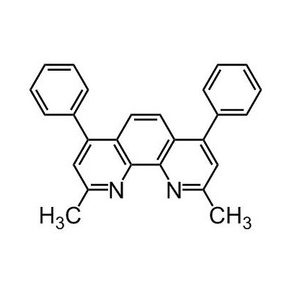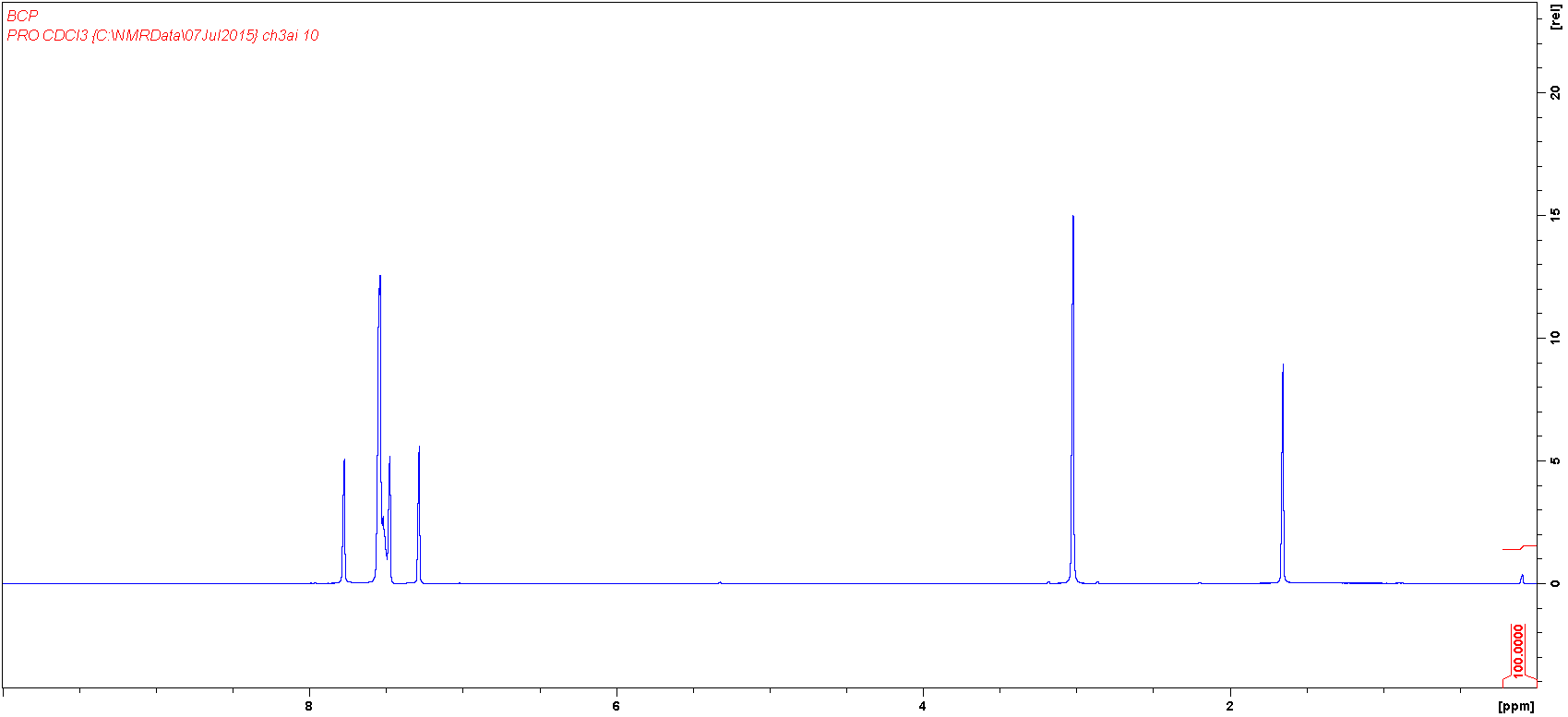Charge Transport Layer Materials, Electron Injection Layer Materials, Electron Transport Layer Mater


Bathocuproine (BCP), CAS number 4733-39-5, is a wide-band-gap material and has a high electron affinity. When it is embedded into organic electronic devices, bathocuproine acts as an electron-transport layer (ETL) and exciton-blocking barrier (EBL) which prohibits exciton diffusion process towards the Al electrode. It has a phenanthroline core with methyl and phenyl substituents. The electron-donating nitrogen atoms are able to complex with metal electrodes, improving charge transport properties and stability.
Bathocuproine is one of the most commonly used buffer layer between acceptor and cathode layers. The introduction of the buffer layer can greatly improve the PCE of polymer organic solar cells. Bathocuproine is one of the most popular hole-blocking layer materials that is used in organic electronics, including perovskite solar cells.
| Full name | 2,9-Dimethyl-4,7-diphenyl-1,10-phenanthroline |
|---|---|
| Synonyms |
|
| CAS number | 4733-39-5 |
| Molecular formula | C26H20N2 |
| Molecular weight | 360.45 g/mol |
| HOMO / LUMO | HOMO ~ 6.4 eV LUMO ~2.9 eV |
| Classification / Family | Electron-transport layer (ETL), Electron-injection layer (EIL), Hole-blocking layer, OFET, OLED, Organic Photovoltaics, Perovskite solar cells, Sublimed materials. |
| Purity |
>99.5% (sublimed) >98.0% (unsublimed) |
|---|---|
| Melting point | 280-282°C (lit.) |
| Appearance | Light yellow powder |
*Sublimation is a technique used to obtain ultra pure-grade chemicals. For more details about sublimation, please refer to the Sublimed Materials.
 Chemical Structure of Bathocuproine (BCP)
Chemical Structure of Bathocuproine (BCP)
| Device structure | ITO/DNTPD* (60 nm)/NPB (20 nm)/mCP (10 nm)/mCP:FIrpic (25 nm)/CBP:Ir(piq)2acac (5 nm)/BCP (5 nm)/Alq3 (20 nm)/LiF (1 nm)/Al (200 nm) [5] |
|---|---|
| Colour |
White |
| EQE@500 cd/m2 | 8.2 % |
| Current Efficiency (@500 cd/m2) | 12.7 lm W−1 |
| Device structure | ITO/NPB (30 nm)/NPB: DCJTB: C545T* (10 nm)/NPB (4 nm)/DNA (8 nm)/BCP (9 nm)/Alq3 (30 nm)/LiF (1 nm)/Al (100 nm) [6] |
|---|---|
| Colour |
White |
| Max. Luminance | 13,600 cd/m2 |
| Max. Current Efficiency | 12.3 cd/A |
| Max. Power Efficiency | 4.4 lm W−1 |
| Device structure | ITO/2T-NATA (17 nm)/TPAHQZn* (25 nm)/NPBX* (15 nm)/BCP (8 nm)/ Alq3 (35 nm)/LiF (0.5 nm)/Al (120 nm) [7] |
|---|---|
| Colour |
White |
| Max. EQE | 17.5% |
| Max. Luminance | 12,930 cd/m2 (12 V) |
| Max. Current Efficiency | 2.66 cd/A (10 V) |
| Device structure | ITO/ NPB(60 nm)/Alq3:DCM(7nm)/BCP(12 nm)/ Alq3(36nm)/ MgAg(200 nm) [8] |
|---|---|
| Colour |
Red |
| Max. Luminance | 1, 000 cd/m2 |
| Max. Current Efficiency | 5.66 cd/A |
| Device structure | ITO/α-NPD* (50 nm)/7%-Ir(ppy)3:CBP (20 nm)/BCP (10 nm)/Alq3 (40 nm)/Mg–Ag (100 nm)/Ag (20 nm) [9] |
|---|---|
| Colour |
Green |
| Max EQE | (12.0±0.6)% |
| Max. Powder Efficiency | (45±2) lm W−1 |
*For chemical structure information please refer to the cited references.
 HPLC trace of Bathocuproine (BCP).
HPLC trace of Bathocuproine (BCP). 1H-NMR spectrum of 2,9-Dimethyl-4,7-diphenyl-1,10-phenantroline, also known as Bathocuproine, BCP in CDCl3: Instrument AVIIIHD400 (see full version).
1H-NMR spectrum of 2,9-Dimethyl-4,7-diphenyl-1,10-phenantroline, also known as Bathocuproine, BCP in CDCl3: Instrument AVIIIHD400 (see full version).
专业代理国外知名镊子品牌
我们将竭诚为你服务
0755-23003036